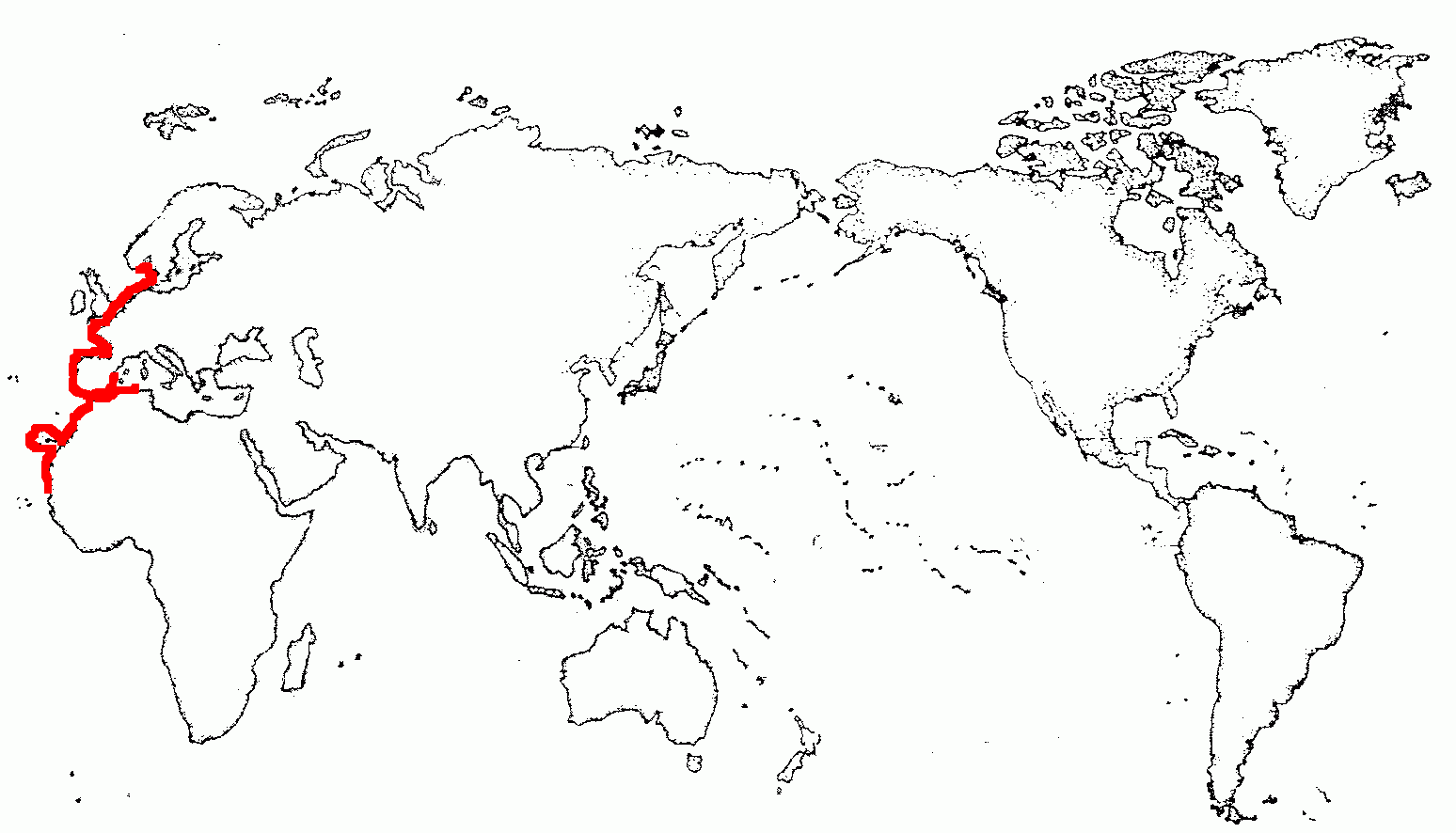
num. 7-12 dicembre 2007
 |
page 33 |
page 035 |
 |
Pecten maximus Linnaeus, 1758
Gilda PianciamoreTesto e descrizione originale di Linnaeus
Original text and description of Linnaeus

“Ostrea testa radiis rotundatis longitudinaliter striatis...habitat in Oceano Europaeo "
Linnaeus C., 1758. Systema naturæ per regna tria naturæ, secundum classes, ordines, genera, species, cum characteribus, differentiis, synonymis, locis. Tomus I. Editio decima, reformata.
DescrizioneHa aspetto solido e forma subcircolare. Generalmente la valva sinistra è piatta e leggermente più piccola della destra che è bombata. In quest'ultima gli interspazi sono uguali alle coste, presenti in numero variabile da 12 a 15. Le coste radiali sono caratterizzate dalla presenza di 5-7 cordoncini. Le strie di accrescimento sono ben visibili e percettibili al tatto. Le impronte muscolari sono ben evidenti. Seno bissale debolmente presente. Entrambe le orecchiette sono caratterizzate dalla presenza di alcuni cordoncini radiali.DistribuzionePresente sulle coste spagnole fino a Capo de Gata che sembra rappresentare il limite massimo di penetrazione in Mediterraneo. Presente anche in Algeria e probabilmente anche in Marocco. Nell'Oceano Atlantico si rinviene dalla Norvegia alla Spagna interessando anche la Svezia e la Germania. E' segnalato anche in Grann Bretagna, Isole Canarie, Madeira ed Isole Azzorre.Misure e profonditàSi rinviene da 18 a -400 mt , ma è stato rinvenuto anche oltre i -1000 mtRaggiunge misure di 160 mm in esemplari Atlantici, mentre quelli Mediterranei sono più piccoli. |
DescriptionIt is solid looking and has a “sub-circular” form. Generally the left valve is flat and slightly smaller than the right which is convex. In the latter (right), the inter-spaces are the same as the ribs, their number varying from 12 to 15. The radial ribs are characterised by the presence of 5-7 little cords. The accretion stripes are well visible and can be perceived by touch. The muscular impressions are well evident. Bissus sinuses are faintly present. Both auricles are characterised by the presence of some radial cords.DistributionThey are to be found along the Spanish coast up to Cape de Gata which seems to be the maximum limit of penetration in the Mediterranean area. They are also present in Algeria and probably in Morocco as well. They are to be found in the Atlantic Ocean area, re-appearing from Norway to Spain, including also Sweden and Germany. There have also been reported in Great Britain, the Canary islands, Madeira and the AzoresMeasurement and DepthThey are found from 18 to -400 mt, it has also been found, however, at more than 1000 metres depth.Reach measurements of 160 mm in Atlantic specimens, while the Mediterranean specimens are smaller. |

Testi diriferimento
Reference Texts
1974 Parenzan P. - Carta d'identità delle conchiglie del Mediterraneo p.113-15.pl. XXIII n. 11 p. 2511983 Riedel R. - Fauna y Flora del Mar Mediterraneo p. 363 -pl. 124
1987 Tornaritis G. - Mediterranean Seashells p. 134 pl. 205-208
1991 Rambouts A. - Guidebook to Pecten Shells p. 51 pl. 19 fig. 1a
1993 Poppe G.T. & Goto Y. - European Seashells vol II p. 67 pl. 10 fig 2a+b
2005 Doneddu M. & Trainitto E. - Conchiglie del Mediterraneo p. 205 fig. 492
Nota
Tutti gli esemplari selezionati appartengono alla Collezione A.M.I.
Note
All the examples selected belong to the A.M.I Collection.


